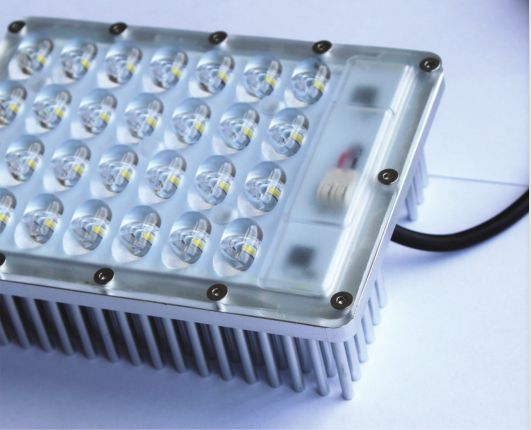 Recently, the task force led by Professor Yuan Xiaocong, a professor of the School of Information Technology, Nankai University, and Professor Capasso of the Harvard University teamed up and published a topic entitled “Can be published in the science journal Scienceâ€. The article on reconstructing polarization-regulated surface plasmon-directed coupling "has made a major breakthrough in the field of "photonic circuits" replacing "integrated circuits" and is expected to solve the above problems.
Recently, the task force led by Professor Yuan Xiaocong, a professor of the School of Information Technology, Nankai University, and Professor Capasso of the Harvard University teamed up and published a topic entitled “Can be published in the science journal Scienceâ€. The article on reconstructing polarization-regulated surface plasmon-directed coupling "has made a major breakthrough in the field of "photonic circuits" replacing "integrated circuits" and is expected to solve the above problems. It is understood that the traditional microelectronics technology is characterized by relying on integrated electronic devices to provide higher information processing speed, storage density and on-chip integration capabilities, but limited by the nano-size bottleneck, integrated electronic devices have begun to be restricted. Another high-tech parallel to the development of microelectronics technology, optoelectronic technology, has shown great potential and advantages in the realization of integrated photonic circuits, interconnected optical paths, and optical calculations, and may be a new generation of replacements for “integrated circuitsâ€. The key pillar of information technology, the key point of this technology is how to realize the manipulation of photons like manipulating electrons on nanoscale highly integrated chips.
"Silicon photonics" chip surface plasmon polaritons (SPPs) are electromagnetic modes formed by the interaction of a free electron and a photon at the surface region of the metal, often referred to as an "information carrier capable of carrying photons transmitted through the wire". It plays an important role in the development of a new generation of optoelectronic integrated technologies, but how to implement "transmission control" of SPPs on nano-sized chips is an international research hotspot in this field.
In his article, Yuan Xiaocong proposed a new coupling method for SPPs. Through a series of sub-wavelength “human†shaped micro-nano metal structures, the current polarization state of incident light severely affected the coupling efficiency of SPPs and the SPP propagation direction could not be controlled precisely. A new reconfigurable directional coupling mechanism for SPPs has been implemented. The results of this research have a major positive effect on the generation, transmission, regulation, interconnection, and detection of SPPs at the micro-nano photonic chip level. The development of large-scale optoelectronic integration of SPPs for the future The interconnection technology laid the foundation.
When talking about the application prospects of the "photonic circuit" in the future, Yuan Xiaocong said that in recent years, how to replace "integrated circuits" with "photonic circuits" has become a hot and difficult area in the field of optical research. The faster the chip speed of the electronic product is, the higher the degree of integration is, and the greater the energy consumption, the easier the body will be heated. The use of "photonic chips" to replace traditional "electronic chips" has broad application prospects in the future. On the one hand, "photonic chips" are very helpful in reducing energy consumption and reducing pollution. On the other hand, because photon propagation speeds far exceed electronics, it will also meet users' demands for electronic product operation speed and standby time.
The unique acicular radiator,360 degree dissipation small wind resistance. High heat dissipation efficiency ensuring that the LED chip can work for 50000 hours.
Color temperature 3000-6000K
Light≥90LM/W
Matching the 2.3.4 lane,tunnel and Landscape Lamp,floodlight dedicated lens.Ensure that intensity and uniformity.
Glare index Signification reduce the original LED Module size,removal of power supply problems.Low demands for application situation and installation personnel More suitable for the transformation of traditional lamps.

Technical parameters
Power :30W,30W,15W,15W
Structure size: 135×100×40 mm, 208×74×49 mm, 125×58×30mm, 380×40×25mm
Lens size: 135×100 mm, 186×64 mm, 125×58mm, 355×40mm
Input voltage: 220 V, 220 V ,220 V, 220 V
Input current: 0.132 A, 0.132 A ,0.123 A, 0.125 A
Luminous flux: 2760 LM ,2400 LM ,1230 LM ,1300 LM
Light effect: 92 LM/W 80 LM/W 82 LM/W 86 LM/W
Color temperature: 5000 K 5000 K 5000 K 5000 K
Power factor: 0.99 PF 0.98 PF 0.98 PF 0.99 PF
Working temperature: -40+50°C, -40+50°C, -40+50°C ,-40+50°C
Led Module,Led Modules For Signs,Led Module Bulb,Led Modules For Signage
Jiangsu chengxu Electric Group Co., Ltd , https://www.satislighting.com
